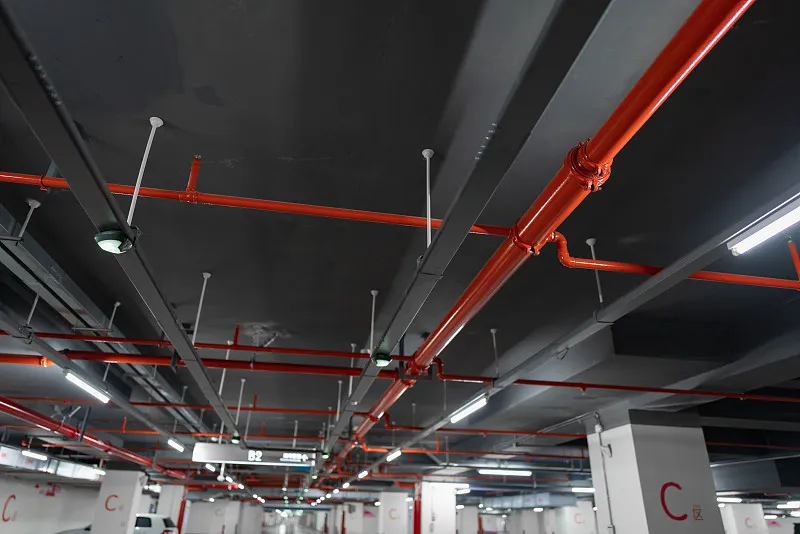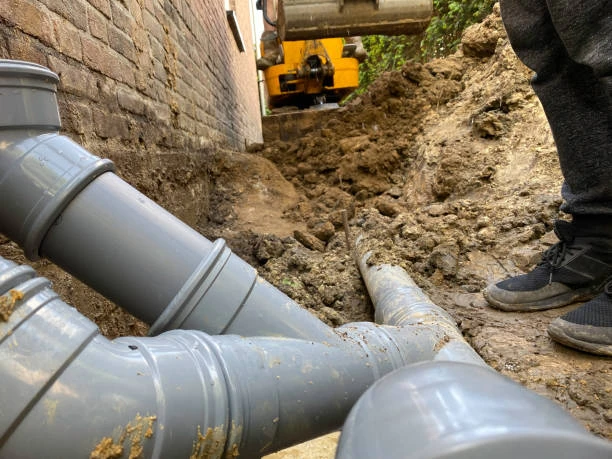Introduce PPR Pipe
PPR (Polypropylene Random Copolymer) pipes and fittings have gained immense popularity in various plumbing and industrial applications, primarily due to their excellent thermal stability. This article will delve into the advantages of PPR Pipe fittings’ thermal stability, exploring how it benefits practical applications across different sectors, and highlighting why PPR is a preferred material in modern plumbing solutions.
Understanding Thermal Stability in PPR Pipe Fittings
Thermal stability refers to a material’s ability to maintain its properties and performance under varying temperature conditions. In the case of PPR pipe fittings, this characteristic ensures that they can withstand high temperatures without degrading or losing structural integrity. PPR fittings can typically handle temperatures up to 95°C (203°F), making them suitable for both hot and cold water applications.
Key Advantages of PPR Pipe Fitting’s Thermal Stability
1. Enhanced Performance in Hot Water Systems
PPR pipe fittings’ thermal stability makes them ideal for use in hot water systems. Here are some benefits:
- Consistent Water Flow: With good thermal stability, PPR fittings maintain their shape and strength under high temperatures, ensuring consistent water flow without leaks or failures.
- Reduced Risk of Deformation: Unlike some materials that may warp or deform when exposed to heat, PPR fittings retain their integrity, providing reliable performance in hot water applications.
- Longer Lifespan: PPR fittings’ ability to withstand high temperatures contributes to their longevity, reducing the need for frequent replacements and repairs.
2. Energy Efficiency
The thermal stability of PPR pipe fittings contributes to energy efficiency in plumbing systems:
- Lower Heat Loss: PPR fittings provide good insulation, minimizing heat loss in hot water systems. This characteristic helps maintain the desired water temperature, reducing energy consumption.
- Efficient Heating Systems: In underfloor heating applications, PPR fittings ensure efficient heat distribution, leading to lower energy costs and enhanced comfort levels.
3. Versatility in Various Applications
PPR fittings are versatile due to their thermal stability, making them suitable for various applications:
- Residential Plumbing: PPR fittings are commonly used in hot and cold water supply lines in residential settings, providing reliable connections that withstand temperature fluctuations.
- Industrial Use: Many industrial applications require piping systems that can handle extreme temperatures. PPR fittings meet these demands, making them ideal for transporting hot liquids and gases.
- Heating Systems: PPR fittings are widely used in heating systems, including radiators and underfloor heating, thanks to their ability to endure high temperatures without compromising performance.
4. Safety and Reliability
Safety is paramount in any plumbing system, and PPR fittings’ thermal stability enhances reliability:
- Reduced Risk of Burst Pipes: Withstanding high temperatures reduces the risk of pipe bursts, which can lead to water damage and costly repairs.
- Non-Toxic Properties: PPR is a non-toxic material, making it safe for transporting potable water even at elevated temperatures.
5. Cost-Effectiveness
The cost-effectiveness of PPR pipe fittings is closely related to their thermal stability:
- Lower Maintenance Costs: With their durability and resistance to high temperatures, PPR fittings require less frequent maintenance, leading to lower overall costs for property owners and businesses.
- Long-Term Investment: While the initial investment in PPR fittings may be comparable to other materials, their longevity and reduced maintenance needs make them a cost-effective choice in the long run.
6. Environmental Benefits
PPR fittings contribute to environmental sustainability, particularly due to their thermal stability:
- Energy Savings: By reducing heat loss in hot water systems, PPR fittings help lower energy consumption, resulting in reduced greenhouse gas emissions.
- Recyclability: PPR is 100% recyclable, making it an environmentally friendly option for plumbing solutions.

Practical Applications of PPR Pipe Fittings
PPR pipe fittings with good thermal stability find practical applications across various sectors, as detailed below:
1. Residential Plumbing
In homes, PPR fittings are commonly used for:
- Hot Water Supply Lines: PPR fittings ensure efficient transport of hot water to kitchens and bathrooms.
- Heating Systems: They are used in radiator connections and underfloor heating, providing reliable and energy-efficient solutions.
2. Commercial Plumbing
In commercial settings, PPR fittings are utilized for:
- Restaurants: PPR fittings are ideal for connecting hot water lines to kitchens, ensuring efficient operation in food preparation.
- Office Buildings: They provide reliable connections in plumbing systems, ensuring consistent water supply for restrooms and kitchens.
3. Industrial Applications
Industries rely on PPR fittings for:
- Chemical Processing: PPR fittings handle hot corrosive liquids, maintaining system integrity under high temperatures.
- Manufacturing: PPR fittings transport various fluids, including steam and hot water, ensuring efficient processes.
4. Heating Systems
PPR fittings play a critical role in heating applications:
- Underfloor Heating: PPR fittings provide connections that allow for efficient heat distribution throughout spaces, maximizing comfort.
- Hydronic Systems: They are essential in hydronic heating systems, ensuring effective heat transfer.
5. Fire Protection Systems
PPR fittings are used in fire protection applications:
- Sprinkler Systems: Their thermal stability ensures that the fittings can withstand high temperatures associated with fire, providing reliable water delivery during emergencies.
6. Aquaculture and Water Treatment
In aquaculture, PPR fittings help maintain optimal conditions for aquatic life:
- Water Circulation Systems: PPR fittings ensure reliable water flow in fish farming operations, where temperature control is crucial.
- Water Filtration: In water treatment facilities, PPR fittings connect various systems, maintaining efficient operation under varying temperatures.
Installation and Maintenance of PPR Pipe Fittings
Proper installation and maintenance are essential for maximizing the benefits of PPR pipe fittings. Here’s a brief guide:
Installation PPR Pipe Process
- Gather Tools: Ensure you have the necessary tools, including a pipe cutter, heat fusion tool, and measuring tape.
- Cut and Prepare: Measure and cut the PPR pipe to the desired length, deburring the edges to ensure a smooth fit.
- Heat Fusion: Use the heat fusion tool to heat both the pipe and fitting before quickly joining them to create a strong bond.
- Cooling Time: Allow the joint to cool completely before applying pressure to ensure a secure connection.
Maintenance Tips
- Regular Inspections: Conduct routine checks for leaks or signs of wear, particularly around joints.
- System Flushing: Periodically flush the system to remove any debris that could affect flow.
- Prompt Repairs: Address any issues immediately to maintain system integrity and prevent further damage.
Conclusion PPR Pipe
PPR pipe fittings’ good thermal stability offers numerous advantages in practical applications, making them an essential choice for plumbing systems. From enhancing performance in hot water systems to providing energy efficiency and safety, the benefits of PPR fittings are undeniable. By understanding and leveraging these advantages, homeowners, builders, and industry professionals can make informed decisions that lead to reliable, cost-effective plumbing solutions.
FAQs PPR Pipe
- What is the maximum temperature PPR fittings can withstand? PPR fittings can typically handle temperatures up to 95°C (203°F), making them suitable for hot water applications.
- How does thermal stability benefit energy efficiency? PPR fittings reduce heat loss in hot water systems, helping maintain desired temperatures and lowering energy consumption.
- Are PPR fittings safe for drinking water? Yes, PPR fittings are non-toxic and safe for transporting potable water.
- What tools are necessary for installing PPR pipe fittings? Essential tools include a pipe cutter, heat fusion tool, measuring tape, and safety equipment.
- How can I maintain PPR pipe systems? Regular inspections, system flushing, and prompt repairs can help maintain the integrity and efficiency of PPR pipe systems.


















